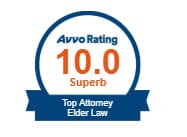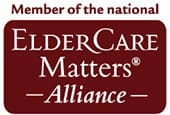
Traditional IRAs and other retirement accounts are often comprised of funds that individuals have worked hard to build up over a significant period of time. These vehicles provide for tax deferment which means that the participants have not paid any taxes on monies initially contributed. The assumption is that when the account holder begins to take out distributions when he reaches retirement age (70 ½), he will be in a lower tax bracket at such time thereby maximizing his savings.
Owners of IRAs are commonly advised to designate specific individuals such as their spouses and/or children or other relatives as beneficiaries, and not trusts or other entities. The reason is that when a person dies, the specific beneficiary has his own definable age and life expectancy so that the value of the IRA and the distributions can be stretched out over the beneficiary's own life expectancy. For example, if a 20-year-old inherits an IRA, he can elect to spread out the IRA over his entire life expectancy (around 60 years) rather than taking a one-lump distribution with significant income tax repercussions. The principal amount that remains in the IRA will continue to grow with continued tax deferment. It is for this reason that one's estate should not be a designated beneficiary. An estate is an entity and does not have a life expectancy.
People who have a disabled child or relative often feel it is helpful to name such child as a beneficiary on their IRAs. This designation ensures that there will be money set aside for the disabled person to live on. Unfortunately, this thinking is usually erroneous, because many disabled individuals rely on governmental entitlements such as Supplemental Security Income ("SSI") and Medicaid which are both need-based benefits. A person is allowed to have only a limited amount of assets and income in order to be eligible for these benefits. A disabled individual cannot have more than $2,000 in non-exempt assets in order to qualify for SSI, which, in turn, makes him automatically eligible for Medicaid. If a disabled individual who is receiving any of these benefits is designated as a beneficiary on an IRA, he will most likely lose his ability to qualify.
In order to avoid imperiling a disabled person's benefits, people often resort to supplemental needs or special needs trusts ("SNTs") as a means by which to provide for the disabled beneficiary. Assets are transferred to a trust which is governed by an agreement ensuring that the trust funds will be used for all of the extras the person needs during his lifetime. When a third party's assets are properly transferred to an SNT, the disabled beneficiary can continue receiving all governmental entitlements while the trust funds are available, at the full discretion of the trustee, for all of the beneficiary's additional needs.
Because a trust is similar to an estate in many ways, one would think that it would not be prudent to designate a trust as a beneficiary of an IRA. Like an estate, a trust is an entity with no life expectancy. Nonetheless, the IRS has carved out certain exceptions so that a trust can be designated as an IRA beneficiary if certain conditions are met. Accordingly, an SNT can be named as a beneficiary of an IRA, but the designation should be done with extreme caution. The ultimate goal would be to maintain the tax treatment (stretch of distributions) of the IRA while not disqualifying the beneficiary from governmental entitlements.
The IRS has ruled that if the trust is a "look through" or "see through" entity, the stretch income tax treatment of the IRA will be available. In other words, if we are able to 'see through' the trust and identify the beneficiaries, then a life expectancy can be determined by using the life expectancy of the specific individual beneficiary, and the trust can get the favorable stretched income tax treatment. The only type of trust that can work in this scenario is an 'accumulation trust.' With an accumulation trust, the trustee has the choice either to pay out or retain in trust any IRA distributions the trustee receives. This type of trust (a see through accumulation trust) with special needs provisions will work best when the beneficiary of an IRA is a disabled individual. In an accumulation trust, if there is more than one beneficiary, the beneficiary with the shortest life expectancy will be used in measuring the payout. Accordingly, naming an elderly relative as a successor beneficiary (if the current disabled beneficiary dies) would not be prudent because the IRS rules require that such elderly beneficiary's life expectancy be used. In addition, it is problematic to name a charity as one of the trust beneficiaries (in addition to the disabled person), because the IRS considers charities to have a zero life expectancy. Where there are multiple beneficiaries including a charity, the charity will always have the shortest life expectancy and will nullify any opportunity to stretch out IRA distributions.
These rules are nuanced and complicated. Obviously, if any planning is involved where one wishes to designate a disabled person as a beneficiary of an IRA, it is prudent and advisable to seek the advice and counsel of an attorney who specializes in this field.
Ronald A. Fatoullah, Esq. is the principal of Ronald Fatoullah & Associates, a law firm that exclusively concentrates in elder law, estate planning, Medicaid planning, guardianships, estate administration, trusts, wills, and real estate. Debby Rosenfeld, Esq. is a senior staff attorney at the firm. The law firm can be reached at 718-261-1700, 516-466-4422, or toll free at 1-877-ELDER-LAW or 1-877-ESTATES. Mr. Fatoullah is also the co-founder of JR Wealth Advisors, LLC. The wealth management firm can be reached at 516-466-3300 or 800-353-3775.






No Comments
Leave a comment